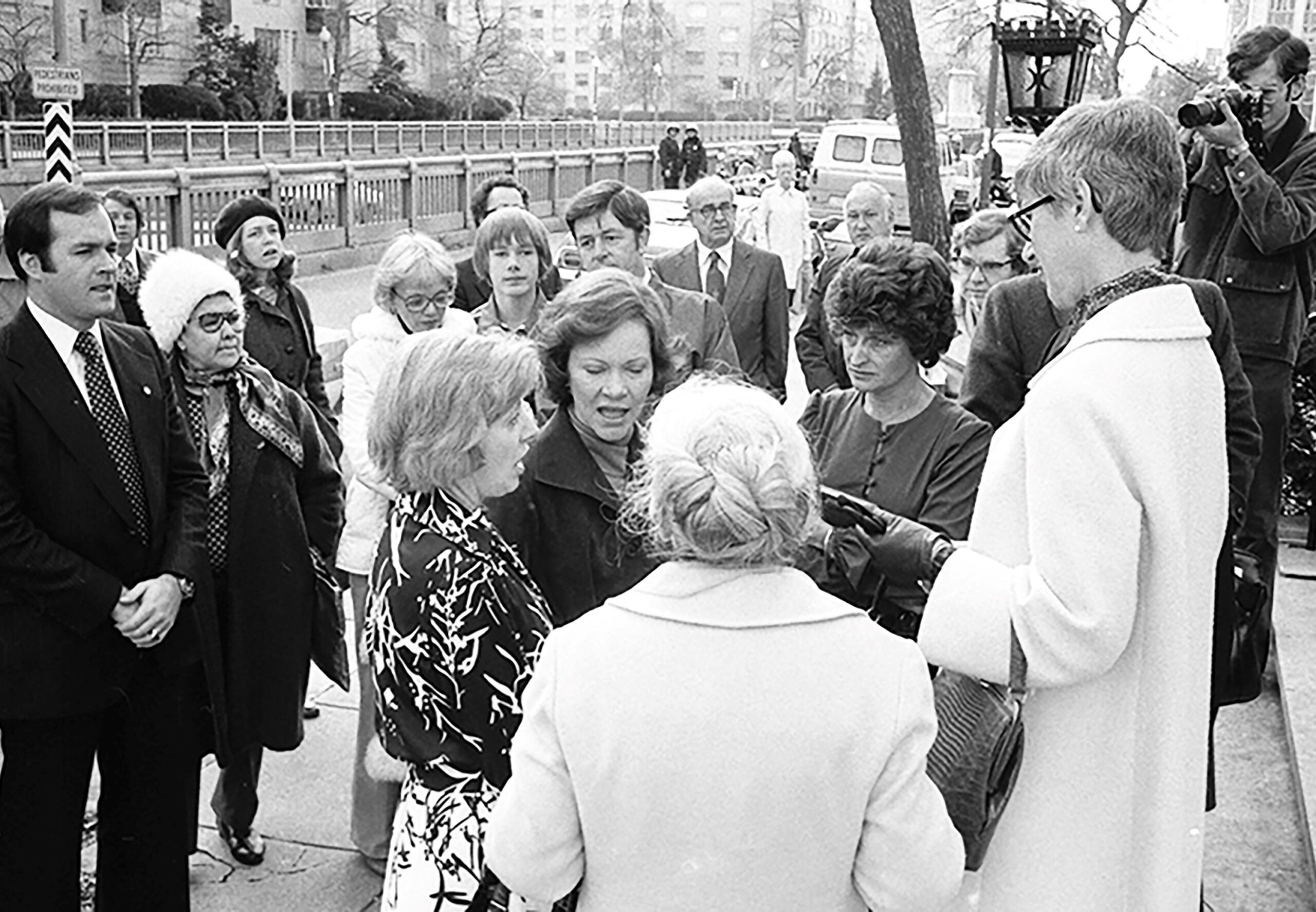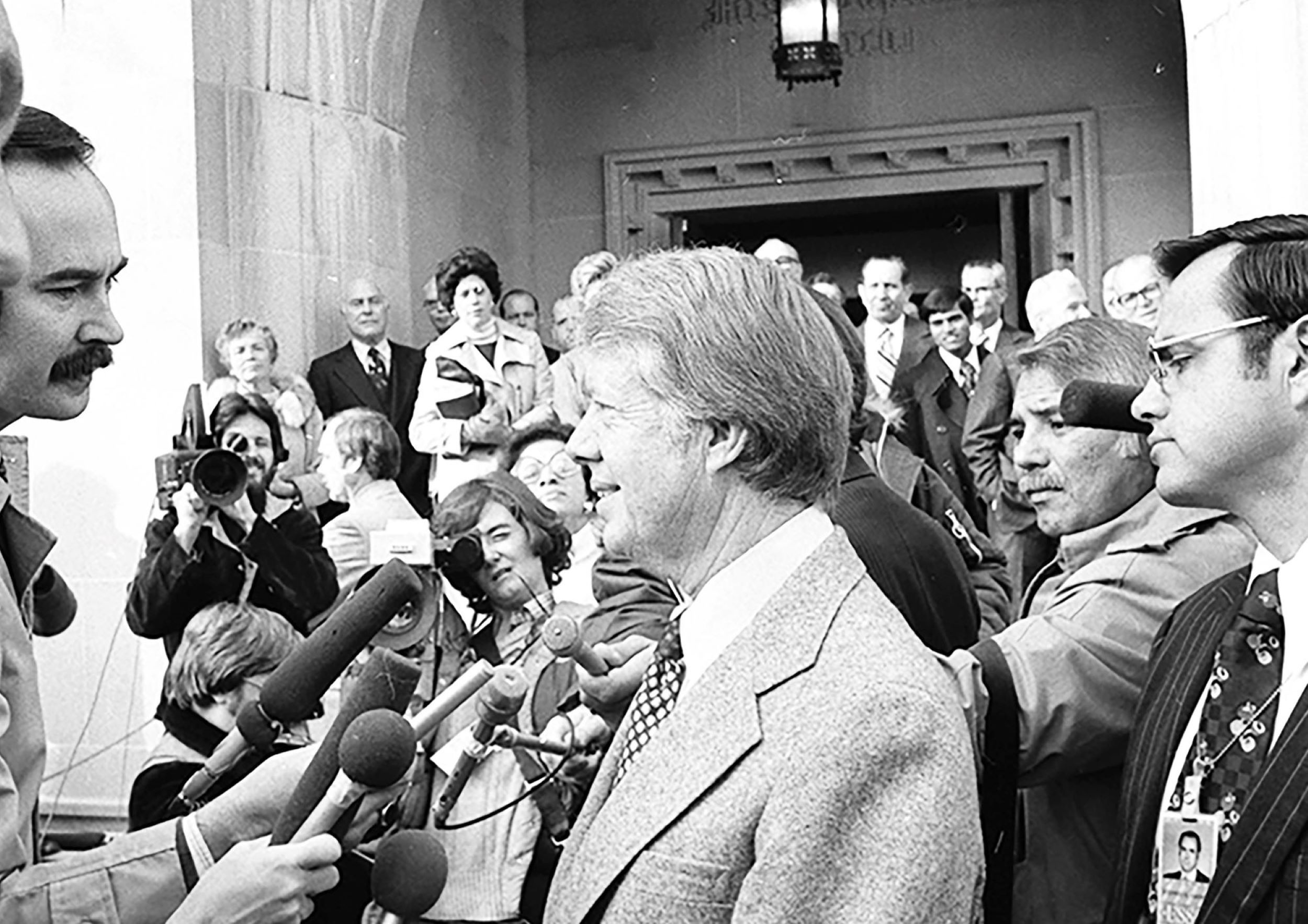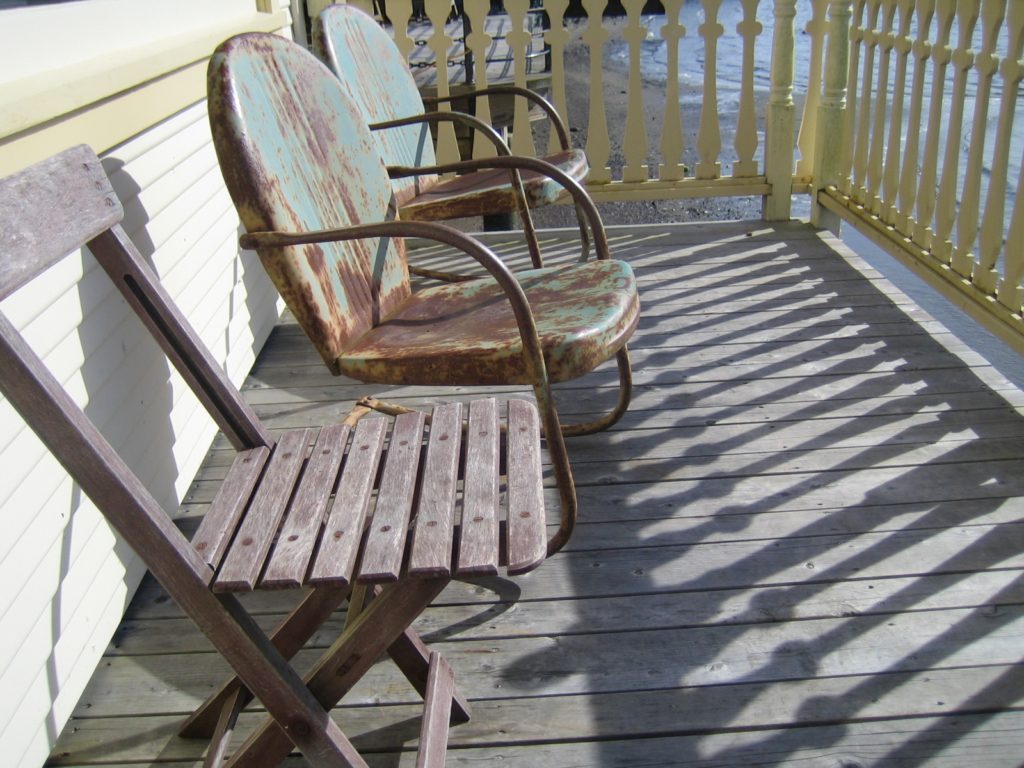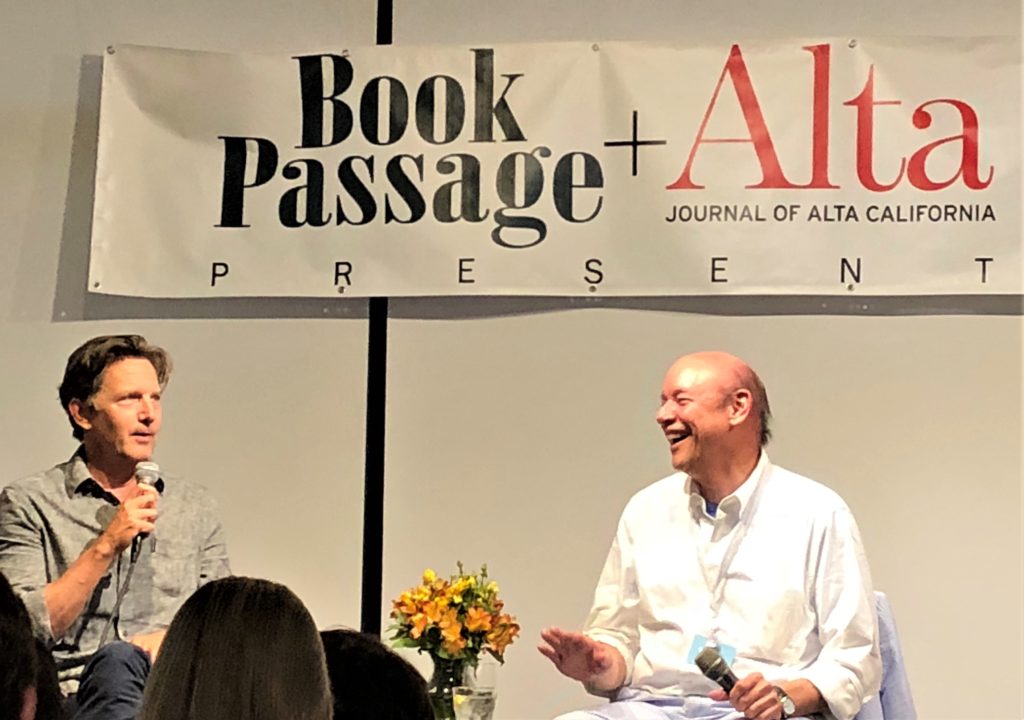When Jimmy Carter attended First Baptist Church in Washington, D.C. as president, I was a newspaper religion writer covering him for The Washington Post. What I remember most, is the consistency of his faith – it was organic and there was nothing false or contrived about it. He was president – yet also regularly taught Sunday School at First Baptist, a mile north of the White House.
Journalists and their editors tend to be skeptics, and with such a devout president in the White House, the religious practice that was normal for him often became a front- or city-page subject of media curiosity. In fact, it started with a buzz around the competition for what church the Carters would join.
On Oct. 1, the former president plans to celebrate his 99th birthday. The New York Times and other media report that he has outlived expectations seven months from the time he entered hospice care following various significant ailments. Already the longest-living president, he has received an extended and fond global farewell these past months, coupled with many warm kudos to his wife Rosalyn, now 96.
I might add that Jimmy Carter as president also surpassed expectations, and with sincere admiration I became quite a fan of him as a person. I have been thinking lately about his example – his steadfastness, conviction and resilience, and his deep partnership with Rosalyn – as his 99th birthday celebration approaches. Yikes, it was nearly 50 years ago that I chronicled his public religious activities as a Washington Post reporter! There must be something powerful in that peanut butter ice cream that he continues to enjoy.
President Carter: A Southern Baptist in the Spotlight of the Nation’s Capital
You wouldn’t find me in his Sunday School classes but, assigned to the “religion beat,” I did write several stories, starting with the behind-the-scenes “contest” for the Carters’ church membership (the headline of my first story – “1st Baptist Leads Race for Carter”). I wrote about how Dr. Charles A. Trentham, “the wavy-haired courtly pastor” had been lobbying since the previous spring for Carter’s presence. I added: “A Carter staff member is known to have prepared a detailed memo for the President about how other chief executives worshiped in Washington and about the characteristics of various churches.” And I noted, there was a lot of praying by members that “the Lord would give him guidance…”
From the records of First Baptist Church – “After two pre-inaugural services at First Baptist, President Carter joined the church on the first Sunday of his presidency, Jan. 23, 1977, along with his wife Rosalynn, his son Chip and daughter-in-law, Caron. Daughter Amy was baptized at the church in February 1977 at age 9.”
In subsequent articles, I described that Sunday when the Carters joined, Amy’s baptism the following month and a few months later, followed up with another feature as the family – and the church – settled into this most unusual routine, and, predictably, the press attention subsided. Who would have thought religion writing would have been so exciting?
You can read more details on the First Baptist Church’s website. The photos in this article are Courtesy: Jimmy Carter Library.
President Carter Taught Sunday School
Then a Southern Baptist from the small town of Plains, Georgia, Jimmy Carter as president faced extraordinary global crises (including the delicate mediation between Israel and Egypt at the Camp David Accords in 1978 and the Soviet invasion of Afghanistan in 1979). However, his routine during his White House term also included teaching Sunday School every few weeks to the Couple’s Class at First Baptist Church, located on 16th Street NW just seven blocks north of the White House.
In fact, he indicated his interest in teaching Sunday School at First Baptist the day he joined the church, and for decades after his presidency, he continued to teach at his hometown Maranatha Baptist Church in Plains, GA.
“I feel welcome,” President Carter said, the day the family joined First Baptist in January 1977. I was there, discreetly listening to his gracious remarks as he mingled during the half-hour coffee break between Sunday School and the church service. (I also noted that he spilled some coffee on his color-coded Bible, so you know I was that close to him.)
I reported that during the service that day in the vaulted gothic structure at 16th and O Streets NW the sanctuary’s tall stained glass windows depicted figures such as Martin Luther and Booker T. Washington. The Carters sat eight rows back, determined as “best in house” by the ministers. “This is an open, friendly church,” one member told me, whose husband was a Sioux. “It is a church where a number of thinking and feeling people have gathered with concern and constant awareness.” Clearly that fit the President’s profile.
“You have made our lives normal lives,” President Carter told his Sunday School class at its annual banquet in October 1977. “You have given us stability in a position that is inherently sometimes unstable. A President of our country can be an isolated person. You have taken us in, and we are indebted to you. Thank you very much.”
Religion in the News in the 1970s
Back then there were two varieties of religion writers, and in the late 1960s and early 1970s the way news media covered religion went through a remarkable transition. The established “old school” were the traditional “church page” editors, typically older and practitioners themselves. The reality was that, while newspapers knew that religion was important to their local communities, they marginalized stories about religious life in one, two, sometimes three, pages of material in the back of the newspaper, next to classified ads.
Religion writers often were tolerated as a necessity, though not taken seriously as journalism professionals by many of their peers. Nonetheless as capable writers and reporters, the traditional religion writers tended to concentrate on summaries of Sunday sermons, weekly calendars of events for churches and synagogues and occasional spiritual insights of their own in religion page essays.
The other lot were people like me – general assignment reporters who covered religion news and features just as we would education, politics, the courts or local government. We were usually younger, fresh out of the socially and politically formative 1960s and starting our careers (and religion writing, along with obits, was at the bottom rung of the upward journalism ladder). You couldn’t charge us with being preachy or defending our beliefs in print; we were simply professionally hungry for a good story that would soon graduate us into another more “legitimate” beat.
Oddly, I discovered a particular niche in religion writing, first at The Richmond News-Leader in Virginia and then at The Washington Post, in the 1970s. The beat produced some of the most fascinating, as well as the most challenging, journalistic experiences of my early career. With the complexity of the social-political issues and the teachings of the various denominations about them, I spent much time understanding their positions through background research before I went out “on the street” to cover them in real-world practice.
The religion beat at that time was a very happening place, abundant with material, controversy and factions. Not many issues escaped religious comment or scrutiny. The Vietnam War, civil rights, feminism and “Women’s Lib” were among the social/political upheavals roiling churches and people of faith and challenging the status quo. Women were becoming priests for the first time; Catholic cardinals and bishops were publicly debating “right and wrong” with respect to sweeping themes of war and poverty; draft resisters ate draft cards in protest rallies attended by with priest-participants; then-fringe movements and so-called “cults” (e.g., the Children of God, Hari Krishna and Scientology) were hypnotic forces captivating and often alienating young minds with promises of personal freedom and inner peace.
First Baptist Church D.C. is no longer part of the Southern Baptist Convention, which has imploded over internal controversies over you-name-it social/political issues, including women in the ministry and LGBTQ rights. (Due to such controversies, the Carters, though still Baptists, haven’t been members of the denomination for more than two decades.)
In Church with President Carter and His Family
With warmth, humor and perspectives from deep theological searching, President Carter delivered his well-prepared Sunday School lessons at First Baptist with ease and humility, comfortably sharing his views as if among a community of friends. For example, following two weeks at Camp David brokering the Peace Accords between Egyptian President Anwar Sadat and Israel’s Prime Minister Menachem Begin, he told his class he had spent “some of the most unpleasant moments of my life, and also some of the most pleasant” in the many hours with the two world leaders, who also were deeply religious in their own faiths.
The classes were popular and drew large crowds to the church, where Jimmy and Rosalynn Carter attended at least 70 times during his presidency.
What I remember from the day Amy Carter was baptized – the TV camera men stepping on my toes relentlessly on the stoop at the front of the church in the cold light snow and, more significantly, the president’s demeanor in the fellowship hall after the church service. It was simply the post-church coffee hour and he treated it like that, easy and approachable, speaking with his slowly paced drawl as he mingled informally among the crowd, which included a few reporters like me.
Many people from the church have remarked about how the former President always seemed to be truly interested in people, smiling at them with a twinkle in his eye as he talked. We spoke briefly and though I don’t remember the content, I remember how striking the “normalcy” of the moment seemed to me.

Chronicling President Carter’s First Baptist Tenure
My own clippings about President Carter vanished long ago during various cross-country job changes. Fortunately, the members of First Baptist D.C. were prodigious subscribers and clippers. Copies of my articles in the church archives caught the eye of former reporter Christi Harlan.
Harlan joined First Baptist 30 years ago, shortly after she began work in the Wall Street Journal’s Washington bureau. (She insists that old reporters never retire, so she’s using her news skills as the church’s communications director.)
When the 98-year-old Carter entered hospice care in February 2023, a couple of news organizations contacted the church about the former president. Harlan reached out to a few more media outlets and secured coverage on C-SPAN and CNN’s website.
She connected with me soon after that when she took off her public affairs hat and put on her reporter’s hat. She is now working to chronicle President Carter’s four years as an active member of First Baptist D.C.
All reporters have deadlines, and this one is especially delicate, given the somewhat fragile state of the longest living president’s health. Harlan is eyeing Oct. 1 to complete a “first draft” of the project. That’s in part due to the various activities that are underway as part of the former president’s official birthday celebration. Commenting in The New York Times on Aug. 21, the former president “is still very much Jimmy Carter” after several health crises, his grandson Josh Carter said, adding that the family is “surprised and thankful” that it appears they will have the chance to celebrate this remarkable occasion.
He has indeed been an extraordinary example of leadership, coupled with sincerity. We are all grateful.



